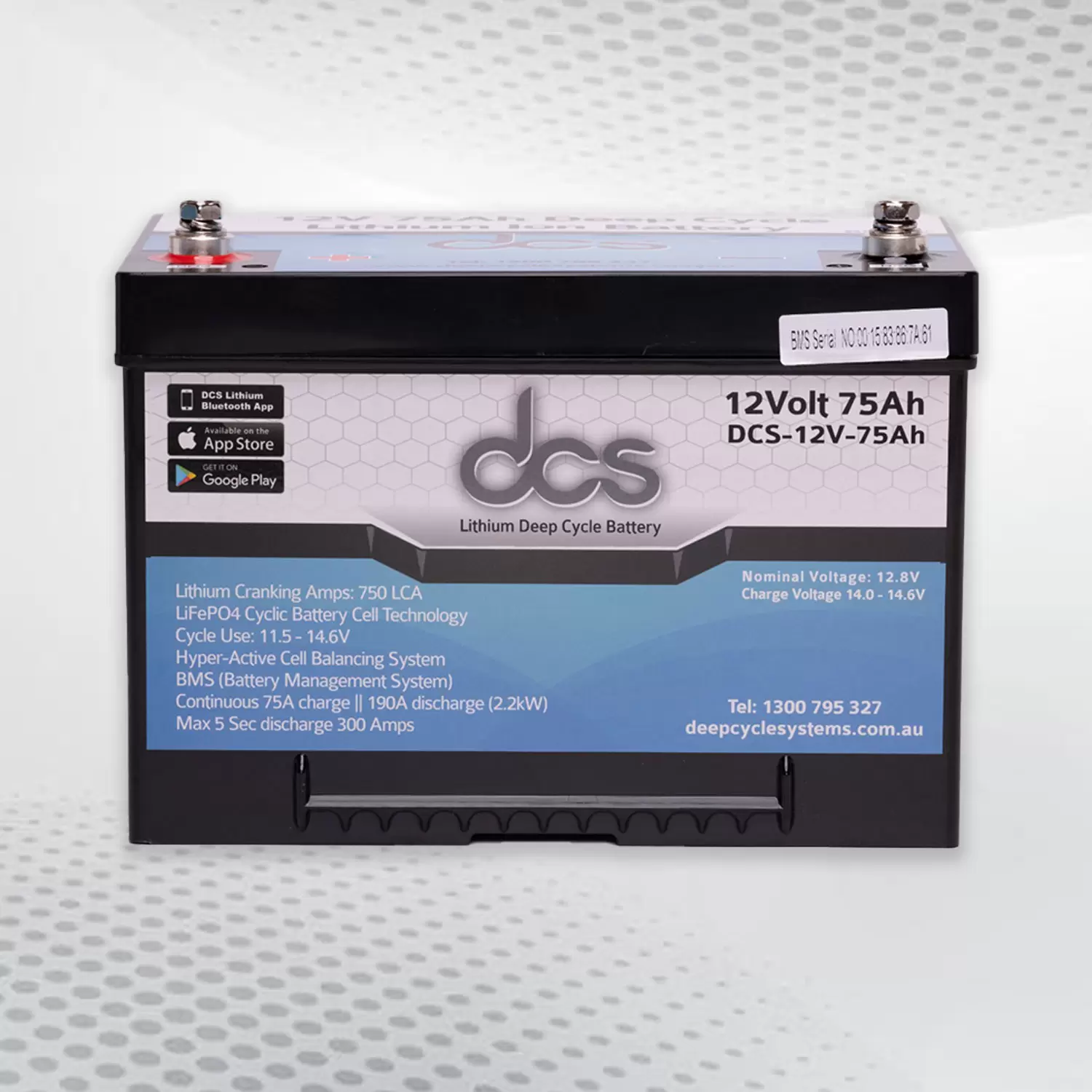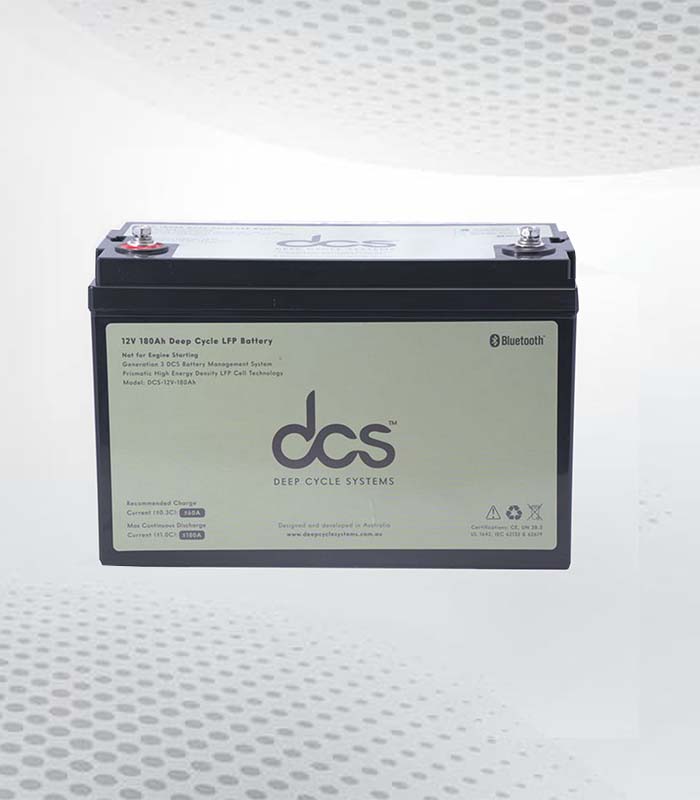Deep-cycle batteries are pivotal in energy storage, especially for off-grid and renewable energy systems. Unlike standard car batteries, these batteries are engineered to provide consistent power over prolonged periods. They are designed to endure deep discharges and repeated charging cycles, making them highly suitable for long-term energy delivery applications. Deep-cycle batteries offer reliability and efficiency when used in marine environments, solar power setups, or backup power systems. This guide explores the critical aspects of deep cycle battery AH (amp hour), size, capacity, and the impact of external conditions such as temperature on their performance.
Understanding Deep-Cycle Battery Ah
Understanding deep-cycle batteries’ AH (amp-hour) rating is fundamental to grasping their performance capabilities. The AH rating signifies the energy a battery can deliver over a specified period, typically 20 hours. For example, a battery with a 100 AH rating can provide five amps of current for 20 hours. This measurement determines how long a battery can power devices before recharging. Higher AH ratings indicate a greater capacity for sustained energy delivery, particularly beneficial for applications requiring long-term power.
The AH rating also helps compare different battery options to ensure that the chosen battery meets the application’s specific energy requirements. External factors such as temperature can influence the AH rating, making it essential to consider operating conditions when evaluating battery performance.
Advanced deep-cycle batteries often feature high AH ratings to cater to demanding energy needs, ensuring that they remain efficient and reliable across various applications. By understanding the AH rating, users can make informed decisions about the suitability of a deep-cycle battery for their specific power requirements.
Largest Deep Cycle Battery Options
The largest deep-cycle battery options are essential for applications that demand substantial power and extended operational periods. These batteries are characterised by their substantial physical size and high energy capacity, allowing them to store more energy than smaller units. Such attributes make them suitable for marine environments, extensive solar power systems, and large-scale backup power solutions.
These larger batteries’ increased energy storage capacity helps reduce recharge frequency, ensuring a continuous and reliable power supply. Additionally, the robust construction of the largest deep cycle battery enables them to support heavier electrical loads, which is crucial for demanding applications. Consequently, these batteries are often the preferred choice for professionals and industries requiring a dependable and extensive energy source.
High Capacity Deep Cycle Battery
High-capacity deep-cycle batteries excel in energy storage and efficiency, making them ideal for applications with substantial power demands. These batteries are engineered to provide prolonged runtimes and higher energy density, allowing for more extended periods of energy delivery. Their design often includes advanced technologies that enhance performance and durability, ensuring they can handle more significant loads without degradation. High capacity deep cycle battery ensure a consistent and reliable power supply in settings such as renewable energy systems, large recreational vehicles, and industrial machinery.
Additionally, the increased energy density means fewer batteries are needed to achieve the same energy output, optimising space and reducing overall system weight. High-capacity deep-cycle batteries are also typically built with robust materials that withstand harsh conditions, further extending their operational lifespan and reliability.
Understanding High Amp Hour Deep Cycle Battery
High amp hour deep cycle batteries are engineered to deliver sustained energy over long durations, making them indispensable in settings with significant power demands. These batteries are designed to support high energy loads efficiently, ensuring that devices and systems remain operational for extended periods without frequent recharging. The elevated amp hour rating translates to a greater capacity for energy storage, which is crucial for applications such as off-grid living, large marine vessels, or industrial machinery.
The advanced construction of these batteries often incorporates high-quality materials and cutting-edge technology to enhance their durability and performance. This robust design enables them to endure continuous use and deep discharge cycles, extending their operational lifespan. Choosing a high amp hour deep cycle battery can prove invaluable in environments where a reliable and uninterrupted power supply is paramount.
Additionally, these batteries’ increased energy capacity can help optimise space and weight considerations, especially in mobile applications like recreational vehicles and marine vessels. Fewer batteries are required to achieve the desired energy output, leading to more efficient and streamlined energy storage systems. By selecting high amp hour deep cycle batteries, industries and individuals can ensure a consistent and dependable energy source catering to their specific power needs without frequent maintenance or replacement concerns.
Maximising Battery Lifespan
Proper maintenance and care are essential for extending the lifespan of deep-cycle batteries. By following best practices, users can ensure consistent performance and avoid premature failure. Below are key strategies to maintain and optimise battery health.
Regular Inspections and Cleaning
Routine checks help identify early signs of wear or damage. To prevent power loss, inspect terminals for corrosion and ensure connections are tight. Cleaning terminals with a baking soda can remove buildup, improving conductivity and efficiency.
Avoiding Deep Discharges
Deep cycle batteries perform best with shallow discharge cycles. Allowing the battery to fully discharge frequently can strain internal components. Recharging before the battery reaches a critically low level helps preserve its capacity and longevity.
Using Smart Charging Equipment
Investing in a quality smart charger can significantly enhance battery life. These chargers adjust voltage and current automatically, preventing overcharging and undercharging. This ensures optimal charging cycles, reducing stress on the battery.
Proper Storage Conditions
Extreme temperatures can accelerate battery degradation. Storing batteries in a cool, dry place minimises exposure to heat and moisture, which can affect performance. Insulating batteries in colder climates also helps maintain efficiency.
Maintaining Electrolyte Levels (For Flooded Batteries)
Regularly checking and topping electrolyte levels with distilled water prevents sulphation and keeps cells functioning properly. Ensuring levels stay within the recommended range avoids damage and maintains consistent power output.
Exploring the Highest Amp Hour Deep Cycle Battery
High amp hour deep cycle batteries represent the pinnacle of energy storage, offering unmatched capacity for applications that demand substantial power reserves. These batteries are particularly advantageous in settings such as off-grid systems, industrial equipment, and large marine vessels, where extended energy delivery is crucial. The advanced design and technology integrated into these batteries enable them to handle large loads without compromising performance or durability.
Such batteries often feature enhanced construction materials and sophisticated internal mechanisms that ensure consistent and reliable energy output. While these high amp-hour batteries come with a larger physical footprint and higher cost, their ability to reduce the frequency of recharging and provide sustained power makes them a valuable investment for energy-intensive applications.
Furthermore, their robust construction allows them to withstand harsh environmental conditions, extending their operational lifespan and maintaining efficiency over time. These characteristics make the highest amp hour deep cycle battery an essential component for industries and applications that cannot afford interruptions in power supply.
Benefits of Maintenance Free Deep Cycle Battery
Maintenance-free deep-cycle batteries provide significant advantages by eliminating the need for regular upkeep. These batteries are designed to be sealed and do not require periodic topping up electrolyte levels with distilled water, as is necessary with traditional flooded batteries. This design reduces the risk of spillage and the associated hazards, making them safer in various environments.
Another key benefit is their resilience to environmental conditions. Maintenance-free batteries are often constructed to be more robust and less susceptible to issues such as sulphation, which can occur when batteries are not properly maintained. This increased durability ensures they can operate effectively in a wider range of temperatures and conditions without significantly reducing performance.
The convenience of maintenance free deep cycle battery is particularly beneficial in applications where battery access is challenging, such as remote installations or locations with limited personnel. Their design also typically includes advanced features such as built-in charge indicators, which help monitor the battery’s state of charge without manual checks.
By incorporating maintenance-free deep-cycle batteries, industries and individuals can benefit from a more reliable and user-friendly power source that requires less intervention, thereby reducing operational downtime and associated costs.
The Effect of Temperature on AH and Battery Performance
Temperature significantly influences the performance and AH capacity of deep-cycle batteries. Extreme high or low temperatures can impair a battery’s efficiency and longevity. In hot conditions, increased chemical activity can accelerate wear and reduce lifespan, while cold temperatures can diminish a battery’s ability to deliver energy effectively. Maintaining batteries within optimal temperature ranges is essential to preserving their functionality.
Advanced battery designs often incorporate thermal management systems to mitigate temperature effects, but situational awareness and proper storage remain crucial. Temperature variations can also impact the rate of charge and discharge cycles, potentially leading to reduced operational efficiency. Users can ensure more stable and reliable battery performance by considering these factors.
Conclusion
Understanding a deep cycle battery AH (Ampere-Hour) rating is crucial for maximising its performance and longevity. By choosing the right AH capacity and maintaining proper care, you ensure that your battery meets your energy needs efficiently. Regular charging practices, avoiding deep discharges, and keeping the battery clean can significantly prolong its life. Additionally, understanding the specific demands of your equipment or vehicle can help you select the ideal battery to avoid underperformance. Applying these insights lets you get the most out of your deep-cycle battery, making it a reliable power source for years.
FAQ’s
What is the AH rating of a deep-cycle battery?
The AH (Ampere-Hour) rating represents the current a battery can deliver over a specified period, typically 20 hours. A higher AH rating means the battery can provide more power over a longer period. It is a critical factor in selecting the right battery for your equipment, as it determines how long the battery will last before recharging.
How can I extend the life of my deep cycle battery AH?
To extend the life of your deep cycle battery AH, avoid letting it discharge completely, as this can reduce its lifespan. Charge it regularly and avoid overcharging. Keep the battery clean and store it in a cool, dry place. Regular maintenance, such as checking the water levels in flooded batteries, will also help prolong its life.
How do I know the correct AH rating for my needs?
The correct AH rating depends on your equipment’s power requirements. Consider the voltage and the time you want the battery to last between charges. For example, if your equipment requires 1 amp per hour and you need it to run for 10 hours, a 10 AH battery would be suitable. Always check the manufacturer’s recommendations for your specific application.
Can I use a battery with a higher AH rating than required?
Yes, you can use a battery with a higher AH rating, but it’s important to consider the battery’s weight and size. A higher AH rating generally means a larger and heavier battery, which may not be ideal for all applications. Make sure your system is compatible with the increased size and weight of the battery.
What are the signs that my deep cycle battery needs to be replaced?
Signs that your deep-cycle battery needs replacement include reduced runtime, difficulty holding a charge, or visible corrosion. If the battery is unable to meet the power demands of your equipment or no longer charges properly, it’s time to consider a replacement. Always follow the manufacturer’s recommended lifespan for best results.
| Related Business Listings |
| Contact Directory |
| Local Business Profiles |




